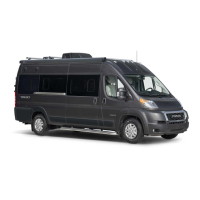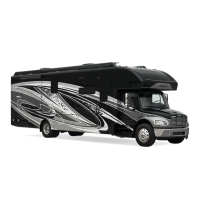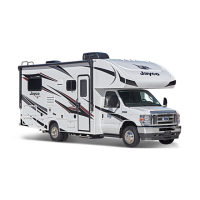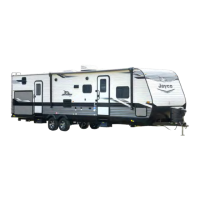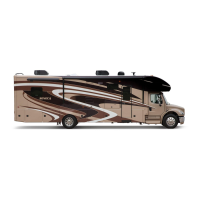71
Air Conditioner
Cooled air enters the RV through the grill. Make sure you have sucient power available
before operating the air conditioner. Do not operate the air conditioner without the return air
lter. Operating the system without the lter allows the lint and dirt that is normally stopped
by the lter to accumulate on the cooling coil of the air conditioner. This also will lead to a
loss of air volume, possible equipment damage and an expensive cleaning process.
A special foam gasket is placed between the roof material and the sub frame of the air
conditioner to guard against water leakage. The air conditioner is subjected to wind pres-
sures along with motor vibration during normal operation. Inspect the mounting bolts for
tightness to ensure there is no leakage or looseness at least annually. Re-tighten bolts when
they are loose. over tighten these bolts as it may damage this gasket. The air
conditioner gasket is a wearable part that eventually will need to be replaced. To gain access
to the bolts, remove the ltered panel cover on central air systems or the entire air box on
non-central air conditioners.
Set the thermostat for either electric or gas heat. On the electric setting, the heat pump
will become the primary heat source as long as the interior temperature of the RV has not
dropped 5° below the thermostat set point. If this occurs, the thermostat will automatically
activate your gas furnace.
The furnace will continue as the heat source until the thermostat set point has been satised.
At that point, the heat pump will again become the primary heat source.
For RV models with a touch screen system, the heating cooling controls are included on the
touch screen selectable screens.
refer to the manufacturer’s owner’s manual included in your
warranty packet or consult your dealer.
TRUMA® Furnace/Water Heater
Your recreational vehicle is equipped with a Truma® Combi furnace with supplementary
indirect water heating.
Power Roof Vent
The 12-volt DC powered roof vent allows fresh air to circulate through the recreational ve-
hicle. Do not leave the attic fan open when the recreational vehicle is stored or unattended
for long periods. High winds, other unusual conditions or obstructions may prevent the
dome from closing; the resulting leakage could cause non-warrantable damage.
To use your fan most eectively, close all vents and slightly open a window on a shaded side
of your recreation vehicle. You are directing the air ow by opening a window.
The roof vent is controlled by either a switch.
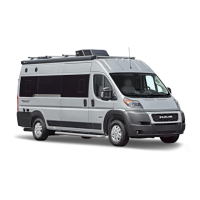
